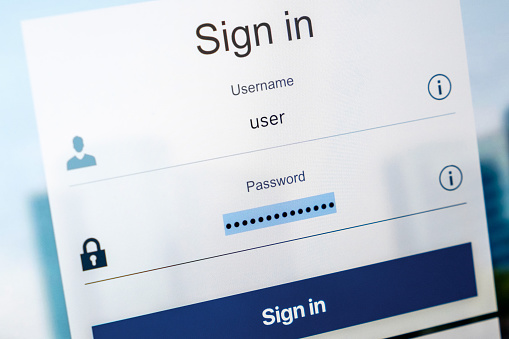One of the most effective ways of alleviating some obstacles that may arise in the process of business is through credentialing. But what are the qualifications for a good credentialing solution and where you should look to best determine which one you need? Find out all about credentialed solutions here!
What is a Credentialing Solution?
A credentialing solution is a set of tools and processes that an organization uses to verify the identities of employees, students, or customers. Credentialing solutions can be used for a variety of purposes, including verifying the legitimacy of an individual’s affiliation with an institution, verifying an individual’s identity for access to resources or services, and confirming the accuracy of the information that an individual provides.
There are a number of different types of credentialing solutions available, and each has its own advantages and disadvantages. Most credentialing solutions rely on databases to store information about individuals. These databases can be centralized or decentralized, and they can be maintained in-house or purchased from third-party vendors.
Credentialing solutions also come in a variety of formats. Some solutions are designed to be used specifically by organizations, while others are broadly applicable and can be used by any type of organization. Some solutions are desktop-based applications, while others are web-based applications. And finally, some solutions are designed to be used in conjunction with other technologies, such as security cameras or biometric ID scanning devices.
When choosing a credentialing solution, it is important to consider the needs of the organization that will use.
Use of Credentialing Solution In healthcare
1. Credentialing software can help to improve the quality of patient care. It can help to ensure that patients receive the best possible care, by identifying and resolving any errors or discrepancies in medical records.
2. Credentialing software can help to reduce the amount of time that healthcare providers spend on paperwork. It can automatize the process of verifying patient information and verifying doctor credentials. This will cut down on the time that healthcare providers spend filling out paperwork, and it will also speed up the process of providing care to patients.
3. Credentialing software can help to reduce the risk of medical negligence lawsuits. By verifying patient information and doctor credentials, credentialing software can help to prevent false claims and fraudulent diagnoses. This will protect healthcare providers from legal action, and it will also protect patients from unsafe medical practices.
4. Credentialing software can help to ensure that patients receive the correct treatment for their condition. It can identify any discrepancies in medical records.
Background Information about Credentialing Solutions

credentialing solutions provide an essential service to businesses and organizations, helping employees to gain and maintain the necessary credentials.
The credentialing solutions industry is growing rapidly, as businesses and organizations face increasing pressure to ensure that their employees have the necessary credentials. Credentialing solutions help employees to gain and maintain the required credentials, including skills certificates, degrees, and professional certifications.
Credentialing solutions can be divided into two main categories: interim credentialing and permanent credentialing. In interim credentialing, solutions provide temporary credentials that help employees to meet the requirements of their current job or career path. Permanent credentialing solutions provide long-term credentials that help employees to progress in their careers.
Some of the most common features of credentialing solutions are online registration and tracking, automatic renewals, and a wide range of specialty services. These solutions are easy to use and convenient for both employer and employee.
7 Qualities of a Great Credentialing Solution
When it comes to credentialing solutions, it’s important to find one that meets your needs and also meets the qualifications of your employees. Here are seven qualities of a great credentialing solution:
-Ease of Use: The credentialing solution should be easy to use and navigate for both employees and supervisors.
-Individualization: Every employee should have their own personalized credentialing solution, which will make managing and tracking their credentials much easier.
-Fixable Errors: The credentialing solution should fix errors quickly and without any hassle.
-Supportive Technology: The credentialing solution should be supported by effective technology, so your employees can access their credentials from anywhere in the world.
-Policy Automation: The credentialing solution should automate the process of issuing and tracking credentials, making it much easier for you and your employees.
-Customizable Templates: The credentialing solution should offer customizable templates that match the specific needs of your organization.
-Price Point That is Right for You: The price point of the credentialing solution should fit within your budget, without sacrificing quality or features.
Conclusion:
Credentialing solutions can be divided into three categories: paper-based credentialing, digital credentialing, and biometric credentialing. Each of these has its own set of strengths and weaknesses.
A paper-based credentialing solution is the most traditional approach and requires the holder to carry a physical document that proves their identity. This system is not ideal for users who need to access their credentials from many different devices or locations. It also has a high processing time, which can be a barrier to accessing credentials when needed.
A digital credentialing solution is the most modern approach and uses computer technology to create and store credentials on a user’s behalf. This system is ideal for users who want to access their credentials from any device or location. However, it has a very high processing time, so it may not be feasible for users who need to access their credentials quickly.
Biometric credentialing is the newest approach and uses biometrics (such as fingerprints or facial scans) to prove a user’s identity. This system is very secure and resistant to attack. However, it has only been adopted by a few companies so far, so it may not be available in all areas yet.



